Community forest

The Forest Law of 2002 provides a legal basis for rural communities to use and help manage forests through community forestry. ...
Civil society

The launch event of a project improving the delivery of public services through ICT in Svay Rieng province, Cambodia. Photo by the ODC team, taken on 28 June 2017. Licensed under a CC BY-SA 4.0.Civil society, representing the interests of ordinary citizens, is the part of ...
Relevant ministries
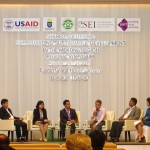
The Ministry of Environment is the main authority mandated to oversee environmental issues, including protected areas, environmental impact assessments, and management of natural resources. ...
Forest cover reporting
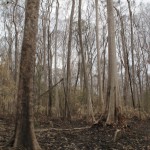
Forest cover is the area of land covered by tree canopy. Measuring and reporting this can show the different types of forest that exist and the areas of each, and how these areas change over time. ...
Banking and financial services policy and regulation
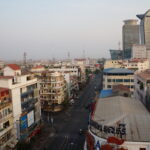
Political stability and economic growth of all sectors have played vital role in building the public and foreign investors’ confidence and maintaining the safety and soundness of banking system in Cambodia. The banking sector continues to have substantial growth as it shares 82.2% in the ...
Agricultural policy and administration

Agriculture in Cambodia accounts for approximately 56% of the labour force. The size of the sector means that policies developed here have a significant impact on the whole country. Agricultural policy and administration is managed by the Ministry of Agriculture, Forestry and Fisheries (MAFF). There ...
National government
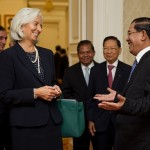
Cambodia is a constitutional monarchy. According to the 1993 Constitution, although he is the head of state, the king has very limited powers compared to the prime minister, the head of the government. Unlike the 1947 Constitution, power does not come from the king but ...
Plants
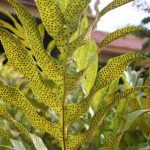
Although there are often new discoveries,54 a global lack of up to date data on botanical research makes plants biodiversity hard to assess in Cambodia. Compared to neighboring countries, the number of plant species is low, mostly due to the relative country’s flat landscape.55 Botanical knowledge ...
Coal
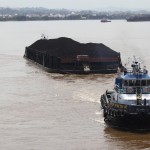
Although exploratory work has indicated the presence of modest coal resources in northern Cambodia, no commercial-scale mining has yet begun. The coal used in electricity generation and for other purposes is imported.A coal barge from Samarinda coal mine on the Mahakam river. Indonesia, Borneo. Photo ...
Mining
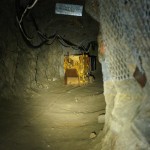
The mining sector in Cambodia is mostly undeveloped, and active mining enterprises are typically small-scale quarries producing materials for construction, such as laterite, marble, granite, limestone, gravel and sand. There is no industrial-scale extraction of minerals, although many exploration licenses have been granted to ...
Vocational education
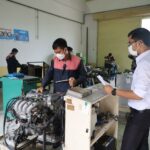
By definition, Vocational education refers to the program that enables people to acquire highly transferable and development skills. It also grants people the necessary technical skill for their desired career.96 Cambodia’s vocational education plays an important role during the country’s economic structural transition and the ...
Fishing, fisheries and aquaculture
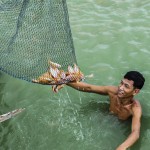
Cambodian fish farmer checking on fish quality. Photo by U.S. Agency for International Development (USAID), taken on 16 October 2012. Licensed under CC BY-NC-ND 2.0.Cambodia’s inland capture fisheries are among the largest in the world. The fishing industry encompasses subsistence, commercial and recreational fishing, as ...
Energy for transport

In Cambodia, petroleum is traditionally the main source of energy for transportation. The petroleum fuels used for transportation include gasoline, diesel, heavy fuel and fuel oil. ...
Budget
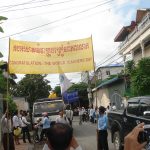
Cambodian Independent Teachers’ Association and Free Trade Union of Workers of the Kingdom of Cambodia celebrated the World Teacher Day from Cambodia. Photo by Education International, taken on 5 October 2009. Licensed under CC BY-NC 2.0Cambodia’s national budget determines state expenditures and revenues. It is ...
Ministry of Women's Affairs
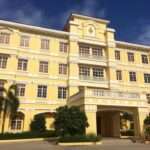
Ministry of Women’s Affairs. Photo taken from the Ministry’s Facebook Page, taken on 17 September 2016.EstablishmentUnder Royal Decree No. NS/RKM/0197/22, the Ministry of Women’s Affairs was formally established on 24 January 1996. The Ministry became the Ministry of Women and Veteran’s Affairs under the Royal ...
Forests and forestry

Cambodia’s forests have seen a significant reduction of total forest and dense forest cover in recent years, the growth of plantations, particularly rubber, and an ongoing problem with illegal logging. ...
Administration
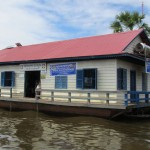
Cambodia’s sub-national administration consists of three tiers: capital city/province, municipality/district and sangkat/commune. Phnom Penh is the capital, and there are 24 provinces, 159 districts (including 26 municipalities and 12 khans), 1406 communes and 227 sangkats. ...
Small and medium enterprises SME
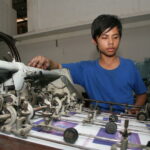
Small and medium enterprises (SME) have long been considered a vital driver to economic growth for developing economies. SMEs stimulate job creation throughout the country. Migration of employment to neighboring countries and the unemployment rate has significantly decreased due to a rising number of SMEs, ...
Communal land

Though there are multiple forms of communal property, the rights associated with indigenous communal property are subject to significant legal and socio-economic issues. Indigenous communities are culturally very different from the rest of Cambodia, and the law provides them with the opportunity to obtain collective ...



